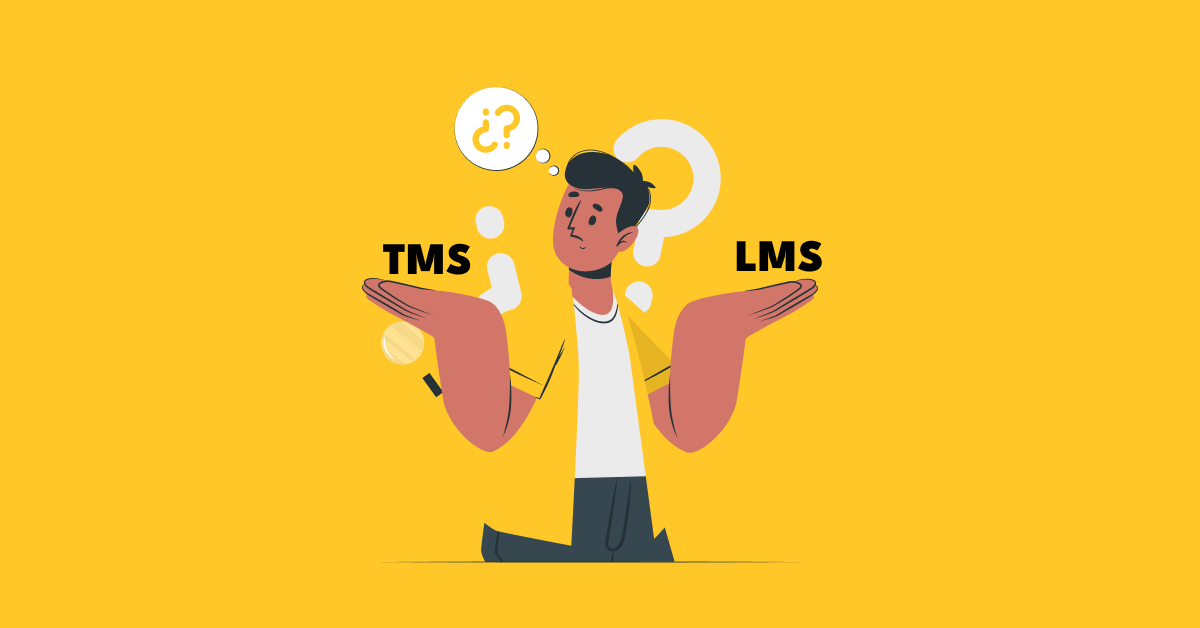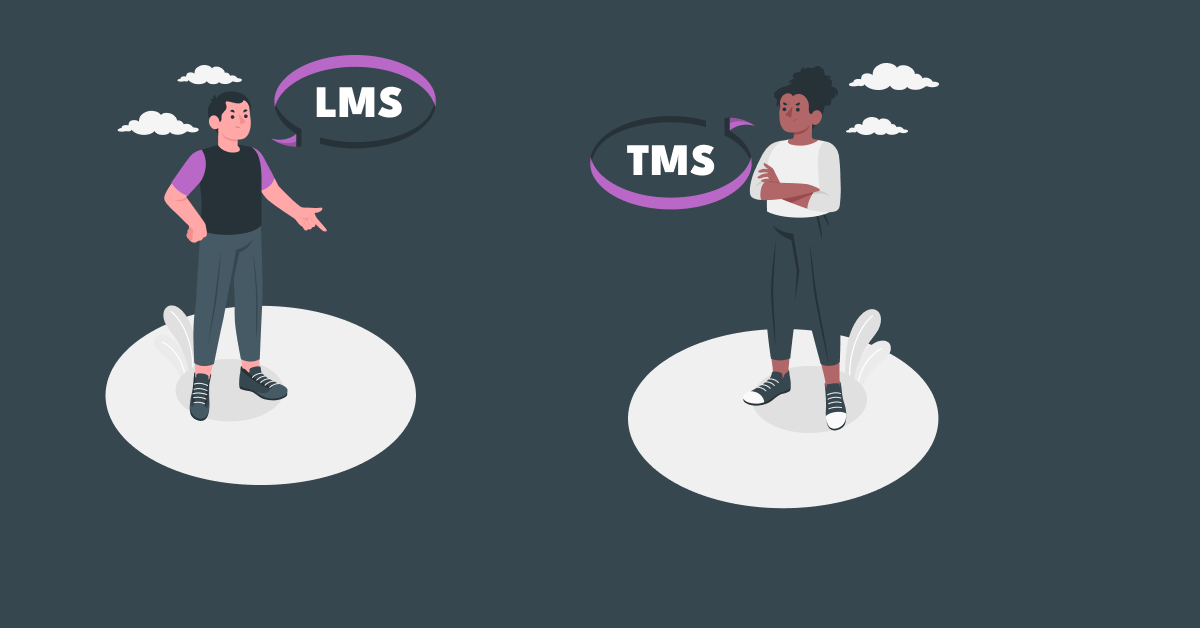TMS Vs LMS
TMS Vs LMS : 11 Differences Between Them
In this article, we will first delve into the fundamental concepts of TMS (Talent Management System) and LMS (Learning Management System) in a concise and easily understandable manner. Once we establish a basic understanding, we will proceed to distinguish the 11 key differences between TMS and LMS. Let's begin by gaining clarity on what TMS and LMS entail.
Training Management System (TMS)
Imagine you're running a busy gym with tons of fitness classes and members. Keeping track of everything can be a workout in itself! A Training Management System (TMS) is like your super-powered gym receptionist, helping you:
- Organize your classes: Create schedules, assign instructors, and manage enrollment. No more messy spreadsheets or forgotten schedules!
- Track attendance: See who's signed up for each class and who actually showed up. This helps you measure the popularity of your programs and make sure everyone gets a spot.
- Collect payments: Handle registration fees and other payments easily. No more chasing people down for cash or awkward money exchanges.
- Generate reports: Get insights into how your training programs are doing. See which classes are the most popular, which instructors are getting good feedback, and where you can improve.
Think of it as a one-stop shop for all your training needs. It takes care of the administrative heavy lifting so you can focus on what really matters: delivering great training programs to your clients.
Learning Management System (LMS)
Now imagine you're a passionate teacher with a treasure chest full of knowledge! You want to share everything you know with your students, but organizing lessons, assignments, and tracking progress can be overwhelming. A Learning Management System (LMS) is like your magical teaching assistant, helping you:
- Store your learning materials: Upload lesson plans, presentations, videos, quizzes, and any other resources you want your students to access. Think of it as your digital treasure chest, where everything is neatly organized and easy to find.
- Deliver your lessons: Create online courses, schedule lectures, and share learning materials with your students. It's like having a virtual classroom where everyone can learn at their own pace, anytime and anywhere.
- Track progress and performance: Give quizzes and assignments, see how your students are doing, and provide personalized feedback. Imagine having a magic mirror that shows you how each student is understanding your lessons, so you can tailor your teaching to their needs.
- Communicate with your students: Post announcements, hold discussions forums, and answer questions. It's like having a built-in walkie-talkie to stay connected with your students and create a vibrant learning community.
So, whether you're a teacher in a school, a trainer in a company, or an instructor for online courses, an LMS can be your magic tool to create effective and engaging learning experiences. It takes care of the technical and administrative tasks, freeing you up to focus on what matters most: inspiring and empowering your students to learn and grow.
11 Differences Between TMS and LMS
1. Focus
- Training Management System (TMS): Primarily handles administrative tasks for instructor-led training (ILT).
- Learning Management System (LMS): Focuses on the delivery and tracking of eLearning content.
2. Typical Users
- TMS: Trainers, administrators, HR personnel.
- LMS: Learners, instructors, course creators.
3. Content Management
- TMS: Manages schedules, attendance records, and certificates.
- LMS: Organizes lesson plans, presentations, videos, and quizzes.
4. Delivery Mode
- TMS: Emphasizes in-person classrooms and virtual classrooms.
- LMS: Mainly online, supports self-paced and blended learning.
5. Assessment
- TMS: Tracks course completion, attendance, and basic evaluations.
- LMS: Conducts scoring on quizzes, assignments, and provides performance feedback.
6. Reporting
- TMS: Generates reports on attendance trends, instructor performance, and budget spending.
- LMS: Provides insights into learner progress, course effectiveness, and identifies skill gaps.
7. Examples
- TMS: Absorb LMS, Trainual, Rippling.
- LMS: SmartLearn LMS, Canvas LMS, Absorb LMS.
8. Integration
- TMS: Integrates with HR systems and payroll software.
- LMS: Connects with authoring tools and collaboration platforms.
9. Cost
- TMS: Can be costly due to complex features.
- LMS: Generally less expensive, often offered through subscription-based models.
10. Scalability
- TMS: Designed to handle large groups of learners and complex training programs.
- LMS: More suitable for smaller groups and simpler learning initiatives.
11. Customization
- TMS: Offers a high degree of customization tailored to specific training needs.
- LMS: Provides less customization, focusing on broad eLearning functionality.


